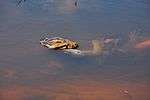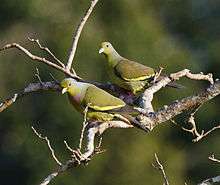Wilpattu National Park
Wilpattu National Park (Willu-pattu; Land of Lakes) is a park located on the island of Sri Lanka. The unique feature of this park is the existence of "Willus" (Natural lakes) - Natural, sand-rimmed water basins or depressions that fill with rainwater. Located in the Northwest coast lowland dry zone of Sri Lanka. The park is located 30 km west Anuradhapura and located 26 km north of Puttalam (approximately 180 km north of Colombo). The park is 1,317 square kilometers (131, 693 hectares) and ranges from 0 to 152 meters above sea level. Nearly one hundred and six lakes (Willu) and tanks are found spread throughout Wilpattu. Wilpattu is the largest and one of the oldest National Parks in Sri Lanka. Wilpattu is among the top national parks world-renowned for its leopard (Panthera pardus kotiya) population. A remote camera survey was conducted in Wilpattu from July to October 2015 by the Wilderness & Wildlife Conservation Trust. A sample of forty nine individual leopards were photo-captured in the surveyed area and the core area density was between that of Yala National Park's Block I and Horton Plains National Park.[2]
| Wilpattu National Park | |
|---|---|
IUCN category II (national park) | |
One of the many trails within the park | |
 Wilpattu National Park | |
| Location | 185km away from Colombo, North Western and North Central provinces, Sri Lanka |
| Nearest city | Mannar |
| Coordinates | 8°26′N 80°00′E |
| Area | 1,316.671km2 |
| Established | 1905 (Wildlife sanctuary) December 25, 1938 (National park) |
| Governing body | Department of Wildlife Conservation |
| Official name | Wilpattu Ramsar Wetland Cluster |
| Designated | 2 February 2013 |
| Reference no. | 2095[1] |
From December 1988 to March 16, 2003, the park was closed due to security concerns surrounding the Sri Lankan Civil War, before being reopened to visitors 16 years later. Visitor access is currently limited to approximately 25% of the park, the remainder of which is dense forest or scrub. Popular visiting periods spans between the months of February and October, although there are a number of private eco-tourism groups that conducts safaris year round.
History
The Mahavansa records that in 543 BC Prince Vijaya landed at Tambapanni now known as Kudrimalai Point (Horse Point), established the Sinhalese kingdom in Tambapanni and founded the Sinhala nation. In 1905 the area was designated a sanctuary and in 1938 it was upgraded to the National Park status.'
Kudrimalai, or Horse Point, was visited by a subject of Emperor Claudius in 47 AD, who was blown off course by the monsoon. The local king later sent his own envoys to Rome during the time of Pliny.
Climate
The Annual Rainfall is about 1000mm and the annual temperature is about 27.2 degrees. Inter-monsoonal rains in March and the northeast monsoon (December – February) are the main sources of rainfall.
Flora and fauna
There are many types of vegetation to be found in Wilpattu, including littoral vegetation, such as salt grass and low scrub monsoon forest with tall emergents, such as palu (Manilkara hexandra), and satin (Chloroxylon swietenia), milla (Vitex altissima), weera (Drypetes sepiaria), ebony (Diospyros ebenum) and wewarna (Alseodaphne semecapriflolia).
31 species of mammals have been identified within Wilpattu national park. Mammals that are identified as threatened species living within the Wilpattu National Park are the elephant (Elephas maximus maximus), sloth bear (Melursus ursinus inornatus), leopard (Panthera pardus kotiya) and water buffalo (Bubalus bubalis). sambhur (Rusa unicolor unicolor), spotted deer (Axis axis ceylonensis), mongoose, mouse and shrew are more of Wilpattu's residents.
Birds
The painted stork, the open bill, little cormorant, Sri Lankan junglefowl (Gallus lafayetii) along with many species of owls, terns, gulls, eagles, kites buzzards are to be found at Wilpattu National Park. Wetland bird species that can be seen in Wilpattu are the garganey (Anas querquedula), pintail (Anas acuta), whistling teal (Dendrocygna javanica), spoonbill (Platalea leucorodia), black-headed ibis (Threskiornis malanocephalus), large white egret (Egretta alba modesta), cattle egret (Bubulcus ibis) and purple heron (Ardea purpurea).
Reptiles
The most common reptiles found in the park are the monitor lizard (Varanus bengalensis), mugger crocodile (Crocodylus palustris), common cobra (Naja naja), rat snake (Ptyas mucosus), Indian python (Python molurus), pond turtle (Melanonchelys trijuga) and the soft shelled turtle (Lissemys punctata) which are resident in the large permanent Villus.
Deforestation
After the end of the civil war, allegations had been made that parts of the reserve has been occupied to build houses by certain politicians in an attempt to settle People . Commerce and Trade Minister Rishad Bathiudeen contends that it was the people who had been forcibly driven away by the LTTE in 1990 in accordance to their ethnic cleansing policy who had returned to their original villages. Further to this the park was extended to the current size in 1999 after the ethnic cleansing where the old villages were marked as part of the park as claimed by the people in this area.[3][4] Aerial images taken recently does show that a considerable portion of the forest has been opened up and a large number of small houses being built in the area.[5] Now the deforestation has been successfully done by Minister Rishad Bathiudeen's guidance and orders initiated with help of former Minister Basil Rajapaksa.
Gallery
Photographs of animals taken within the national park.
Birds
Reptiles
.jpg)
 Indian rock python
Indian rock python.jpg)
Terrestrial animals
References
- "Wilpattu Ramsar Wetland Cluster". Ramsar Sites Information Service. Retrieved 25 April 2018.
- Gunawardana, Kithsiri. "Wilpattu National Park, Sri Lanka". Wilpattu.com. Retrieved 11 February 2018.
- "Wilpattu deforestation controversy". Retrieved 30 September 2018.
- "Wilpattu deforestation controversy". Retrieved 30 September 2018.
- "New developments in deforestation of Wilpattu". Retrieved 30 September 2018.
External link
![]()





.jpg)

.jpg)
.jpg)
.jpg)
.jpg)
.jpg)
.jpg)
.jpg)
.jpg)
.jpg)
.jpg)
.jpg)
.jpg)
.jpg)


.jpg)
.jpg)
.jpg)